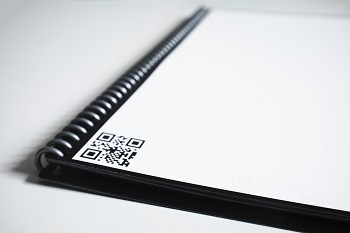Near-field Communication (NFC)
An Alternative to RFID in Libraries
DOI:
https://doi.org/10.6017/ital.v39i2.11811Abstract
Libraries are the central agencies for the dissemination of knowledge. Every library aspires to provide maximum opportunities to its users and ensure optimum utilization of available resources. Hence, libraries have been seeking technological aids to improve their services. Near-field communication (NFC) is a type of radio-frequency technology that allows electronics devices—such as computers, mobile phones, tags, and others—to exchange information wirelessly across a small distance. The aim of this paper is to explore NFC technology and its applications in modern era. The paper will discuss potential use of NFC in the advancement of traditional library management system.
References
“The 5 NFC Tag Types,” accessed March 24, 2019, https://www.dummies.com/consumer-electronics/5-nfc-tag-types/.
Andrew Walsh, “Blurring the Boundaries between our Physical and Electronic Libraries: Location-Aware Technologies, QR Codes and RFID Tags,” The Electronic Library 29, no. 4 (2011): 429–37, https://doi.org/10.1108/02640471111156713.
Apuroop Kalapala, “Analysis of Near Field Communication (NFC) and other Short Range Mobile Communication Technologies” (Project Report, Indian Institute of Technology, Roorkee, 2013), accessed March 19, 2019, https://idrbt.ac.in/assets/alumni/PT-2013/Apuroop%20Kalapala_Analysis%20of%20Near%20Field%20Communication%20(NFC)%20and%20other%20short%20range%20mobile%20communication%20technologies_2013.pdf.
C. Ruth, “NFC Forum Calls for Breakthrough Solutions for Annual Competition,” accessed March 21, 2019, https://nfc-forum.org/newsroom/nfc-forum-calls-for-breakthrough-solutions-for-annual-competition/.
Danielle Kane and Jeff Schneidewind, “QR Codes as Finding Aides: Linking Electronic and Print Library Resources,” Public Services Quarterly 7, no. 3–4 (2011): 111–24, https://doi.org/10.1080/15228959.2011.623599.
Doaa Abdel-Gaber and Abdel-Aleem Ali, “Near-Field Communication Technology and Its Impact in Smart University and Digital Library: Comprehensive Study,” Journal of Library and Information Sciences, 3, no. 2 (December 2015): 43-77, https://doi.org/10.15640/jlis.v3n2a4.
Ed, “Near Field Communication vs Radio Frequency Identification,” accessed March 10, 2019, http://www.nfcnearfieldcommunication.org/radio-frequency.html.
“Gaming Applications with RFID and NFC Technology,” SmartTech, accessed May 14, 2019, https://www.smarttec.com/en/applications/gaming.
Garima Jain and Sanjeet Dahiya, “NFC: Advantages, Limits and Future Scope,” International Journal on Cybernetics & Informatics 4, no. 4 (2015): 1–12, https://doi.org/10.5121/ijci.2015.4401.
“How NFC Works?,” CNRFID, accessed January 12, 2019, http://www.centrenational-rfid.com/how-nfc-works-article-133-gb-ruid-202.html.
Iviane Ramos de Luna et al., “NFC Technology Acceptance for Mobile Payments: A Brazilian Perspective,” Review of Business Management 19, no. 63 (2017): 82–103, https://doi.org/10.7819/rbgn.v0i0.2315.
José Bravo et al., “m-Health: Lessons Learned by m-Experiences,” Sensors 18, 1569 (2018): 1–27. 10.3390/s18051569.
M. Roland, “Near Field Communication (NFC) Technology and Measurements,” accessed May 12, 2019, https://cdn.rohdeschwarz.com/pws/dl_downloads/dl_application/application_notes/1ma182/1MA182_5E_NFC_WHITE_PAPER.pdf.
M.K. Yusof et al., “Adoption of Near Field Communication in S-Library Application for Information Science,” New Library World 116, no. 11/12 (2015): 728–47, https://doi.org/10.1108/nlw-02-2015-0014.
“NFC in Public Transport,” NFC Forum, accessed April 12, 2019, http://www.smart-ticketing.org/downloads/papers/NFC_in_Public_Transport.pdf.
“NFC Technology Discover what NFC is, and How to Use it,” accessed March 17, 2019, https://www.unitag.io/nfc/what-is-nfc.
Projes Roy and Shailendra Kumar, “Application of RFID in Shaheed Rajguru College of Applied Sciences for Women Library, University of Delhi, India: Challenges and Future Prospects,” Qualitative and Quantitative Methods in Libraries 5, no. 1 (2016): 117–130, http://www.qqml-journal.net/index.php/qqml/article/view/310.
Roland, “Near Field Communication (NFC) Technology and Measurements.”
S. Profis, “Everything You Need to Know About NFC and Mobile Payments,” accessed June 27, 2019, https://www.cnet.com/how-to/how-nfc-works-and-mobile-payments/.
Sheli McHugh and Kristen Yarmey, “Near Field Communication: Recent Developments and Library Implications,” Synthesis Lectures on Emerging Trends in Librarianship 1, no. 1 (March 2014), 1–93.
Vedat Coskun, Busra Ozdenizci, and Kerem Ok, “The Survey on Near Field Communication,” Sensors 15, no. 6 (2015): 13348-405, https://doi.org/10.3390/s150613348.
“What is a Near Field Communication Tag (NFC Tag)?,” Techopedia, accessed May 27, 2019, https://www.techopedia.com/definition/28812/near-field-communication-tag-nfc-tag.
“What is Meant by the NFC Tag?,” Quora, accessed July 12, 2019, https://www.quora.com/What-is-meant-by-the-NFC-tag.
“What It Does,” NFC Forum, accessed March 12, 2019, https://nfc-forum.org/what-is-nfc/what-it-does.

Downloads
Published
How to Cite
Issue
Section
License
Copyright (c) 2020 Neeraj Kumar Singh

This work is licensed under a Creative Commons Attribution-NonCommercial 4.0 International License.
Authors that submit to Information Technology and Libraries agree to the Copyright Notice.

